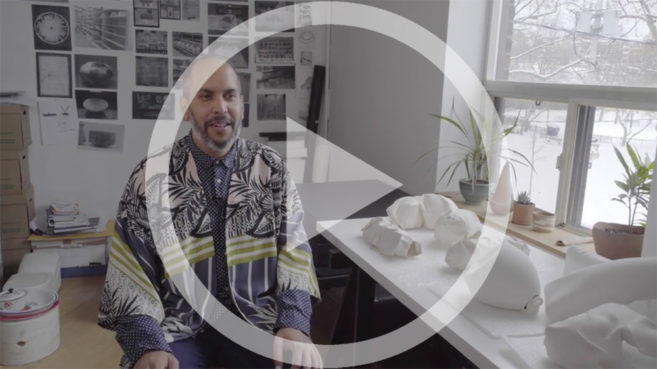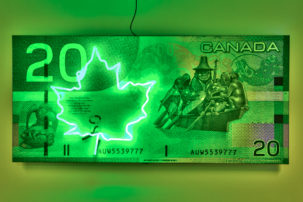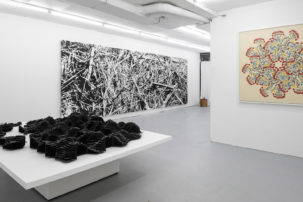Imagination fills in the gaps that memory forgets.
In Sameer Farooq’s “A bag is a veil is a pillar” it is this notion of imagination filling a blank void that stimulates a convergence between the two parts of the exhibition—the monoprint series 24 Affections (2019) and the ceramic works Pouf, Sausage, Weight, Arc (2017)—which both recall what is absent or forgotten.
During a residency at Toronto’s Open Studio, Farooq practiced watching daily visualizations of tantric forms, somatic bodywork and image streaming exercises. These helped him cultivate the mental tools necessary to create 24 Affections. The resulting monoprints contain bright, geometric and undulating shapes resembling natural land formations removed from their original contexts. Each print in the four sets that make up 24 Affections is set against a black background and mounted in a black frame that accentuates the detachment of these landscapes from time and space. Removed from reality in this way, the works become whatever our imaginations desire.
All of Farooq’s monoprints are pairs that play off each other, with the second often looking like a distortion of the first. In the case of the monochromatic 24 Affections (SF-004k) and 24 Affections (SF-004l), the second print looks as though it were viewed during that split second between slumber and wakefulness, like a vivid daydream that sends the mind spiralling before the world comes into focus. Hypnotic layering makes the asymmetrical blue forms in 24 Affections (SF-Blue-3) and 24 Affections (SF-Blue-4) dizzying and alluring, the second even more off-kilter than its partner.
In the exhibition statement, Gabrielle Moser refers to these works as “internal artifacts.” If artifacts housed in museums can be understood as physical keepers of collective memory, then these are Farooq’s personal memory holders. The name of the series reminds me of a mindfulness ritual, prompting us to be more contemplative of the world we cohabit. Farooq’s works motivate the mind to slow down and question perception. Although a departure from his long-standing series The Museum of Found Objects, this show still maintains an essential consideration for that which is omitted and unseen.
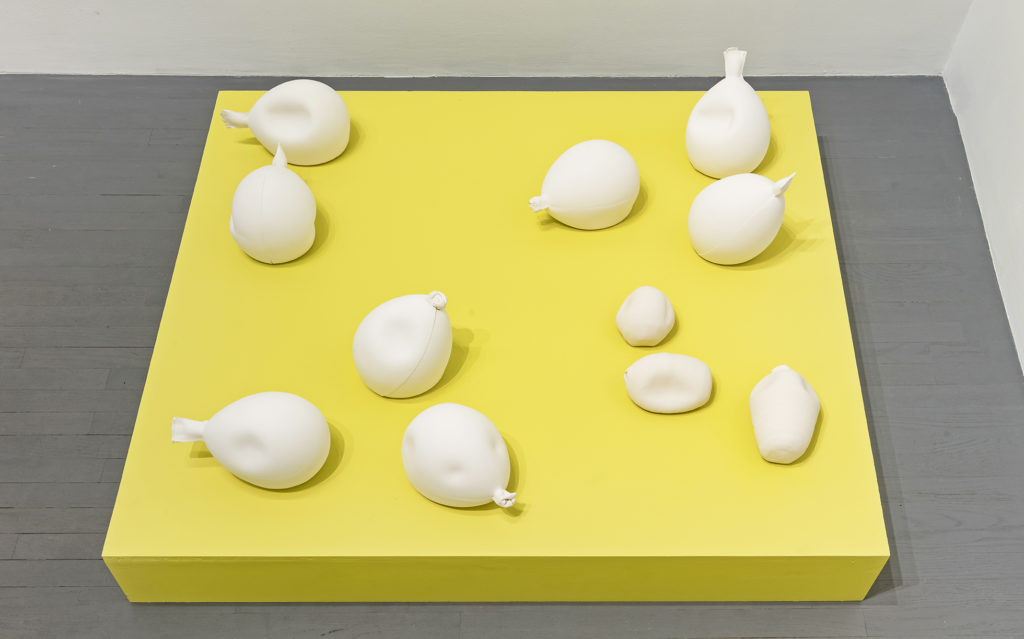 Sameer Farooq, Pouf, Sausage, Weight, Arc (Bag Weights), 2017. Fired porcelain and paper clay. Variable sizes. Courtesy the artist and Zalucky Contemporary. Photo: Toni Hafkenscheid.
Sameer Farooq, Pouf, Sausage, Weight, Arc (Bag Weights), 2017. Fired porcelain and paper clay. Variable sizes. Courtesy the artist and Zalucky Contemporary. Photo: Toni Hafkenscheid.
In Pouf, Sausage, Weight, Arc, the objects are clay renderings of the discarded tissue, packing foam and weights that conservators use to transfer and repair artworks. The objects on display, first shown at the Aga Khan Museum as part of “HERE: Locating Contemporary Canadian Artists,” are just some of the hundreds that Farooq created. Enamoured by the unseen work of conservators, he created this series to bring these oft-forgotten items to the fore by turning the supporting material into art objects.
Here, set atop a yellow plinth, they look deflated and forlorn—which is intentional, considering they’re meant to represent that which is discarded from memory. The carefully placed indentations depict where the weight of canvases or frames would dent the poufs, representing their essential purpose. A nuanced and collaborative connection forms between the prints and clay objects. The ceramics are recontextualized when placed in the same environment as other works of art. We can imagine that these poufs and sausages might have a very real relationship with the pieces hanging on the wall.
As the imagination creates worlds that are simultaneously of and apart from reality, the link between fantasy and absence is undeniable. It’s in this space disconnected from the tangible and visible that memory and imagination intermingle in the mind. The true virtue of “A bag is a veil is a pillar” is that the works have the capacity to become whatever we desire them to be.

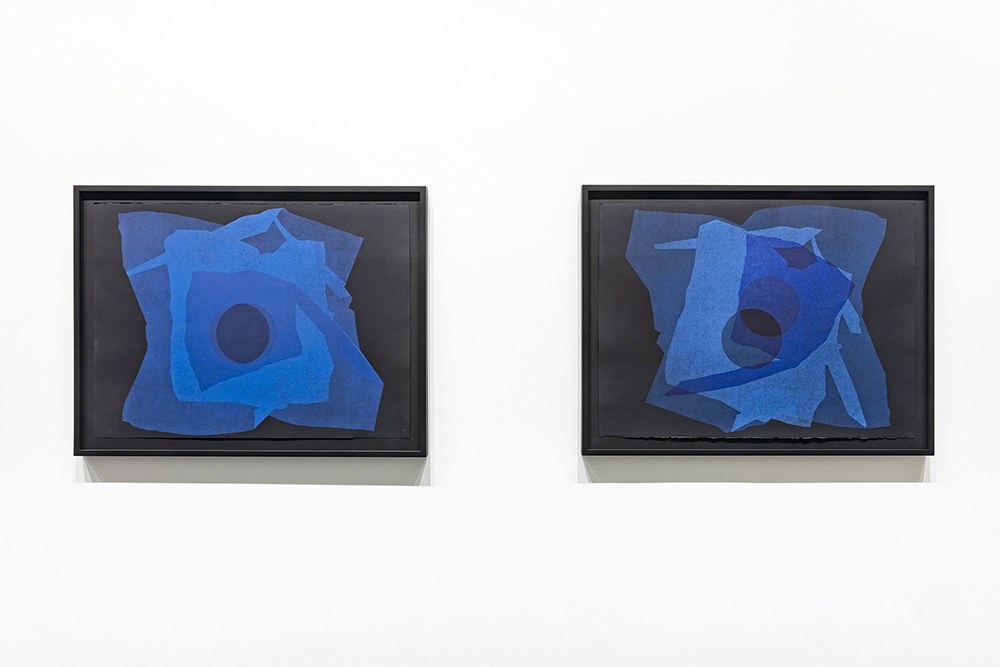 From left: Sameer Farooq, 24 Affections (SF-Blue-3) and 24 Affections (SF-Blue-4), 2019. Monoprints, 25.5 x 33.3 in. Courtesy the artist and Zalucky Contemporary. Photo: Toni Hafkenscheid.
From left: Sameer Farooq, 24 Affections (SF-Blue-3) and 24 Affections (SF-Blue-4), 2019. Monoprints, 25.5 x 33.3 in. Courtesy the artist and Zalucky Contemporary. Photo: Toni Hafkenscheid.
